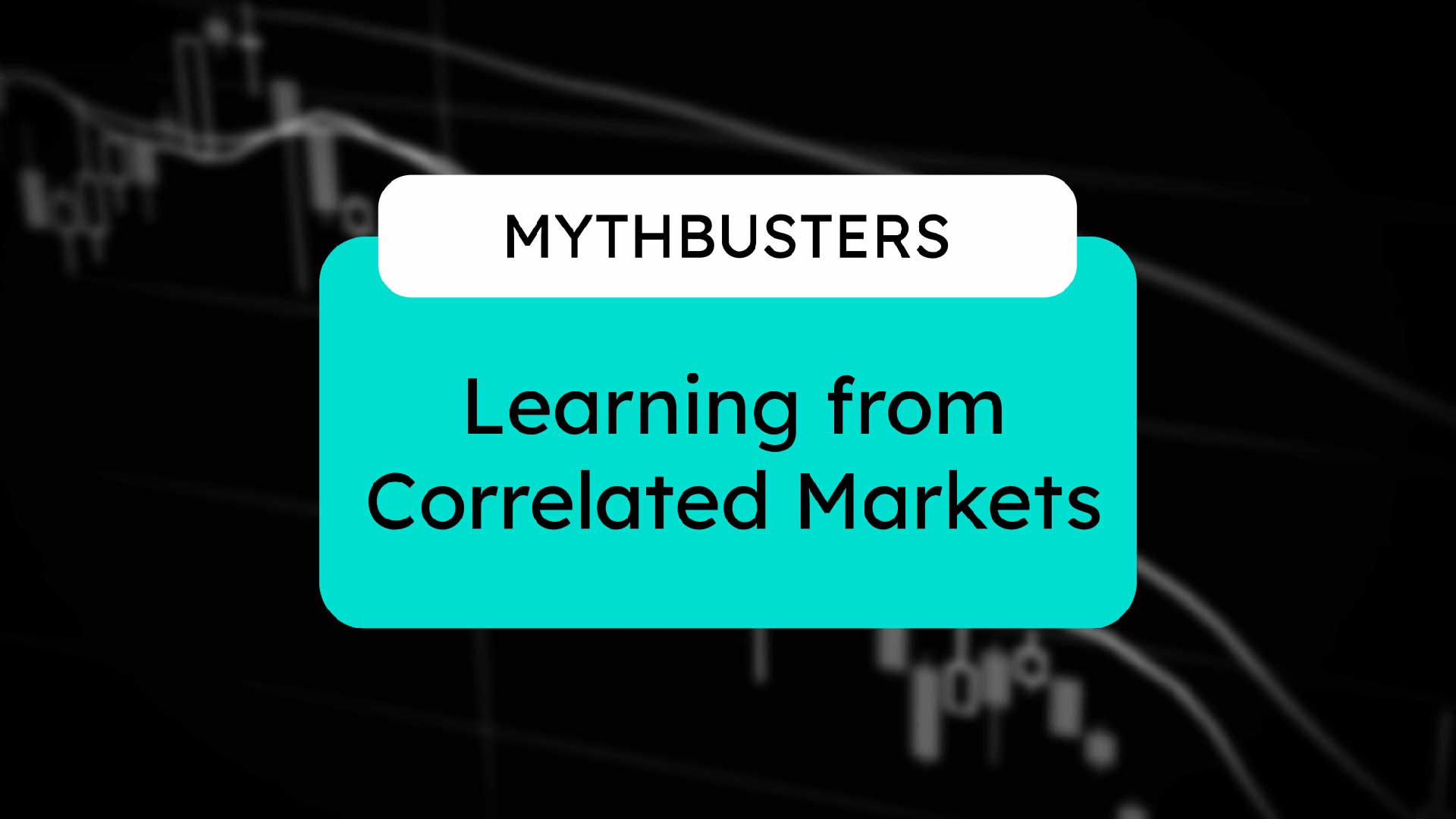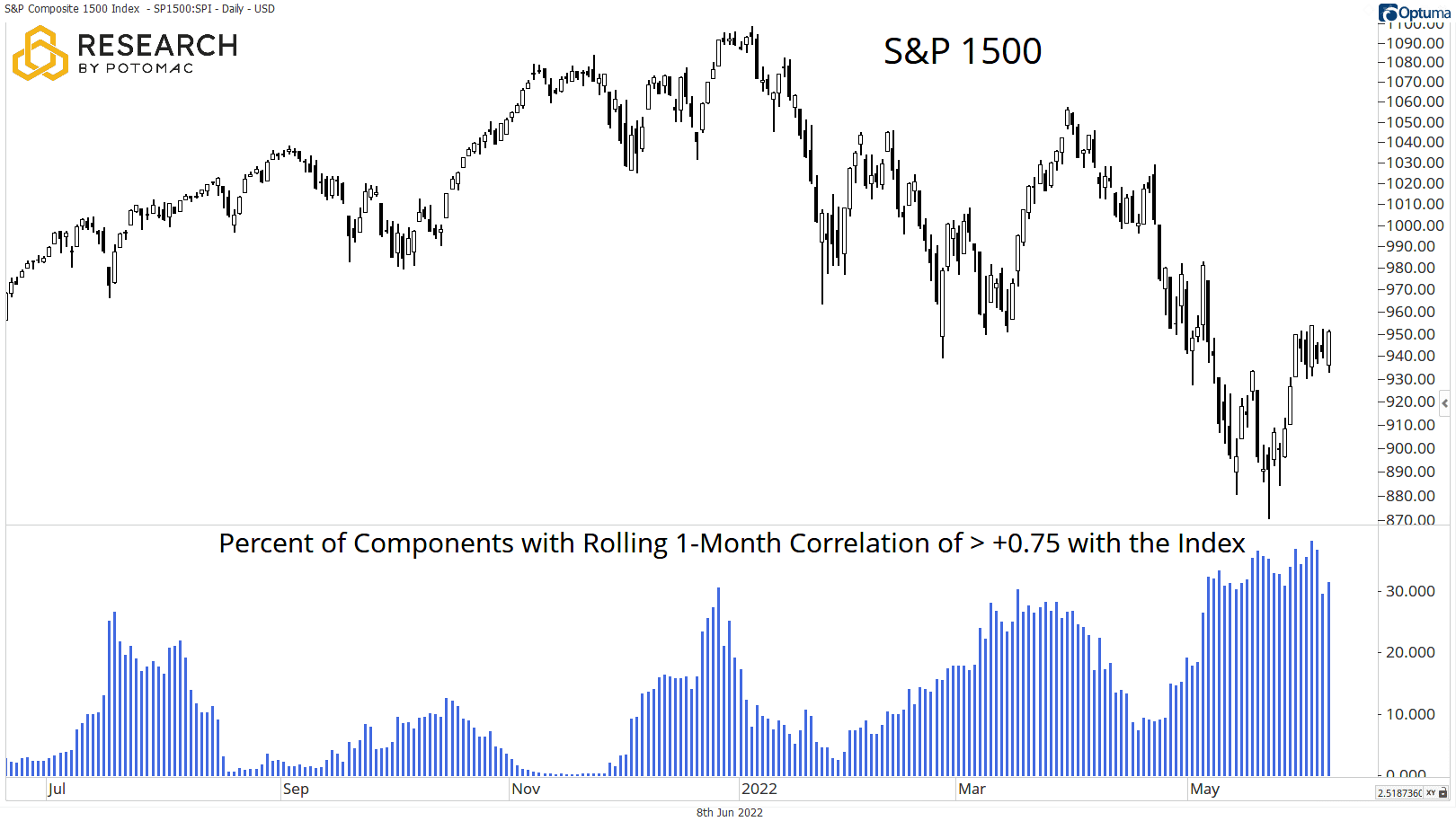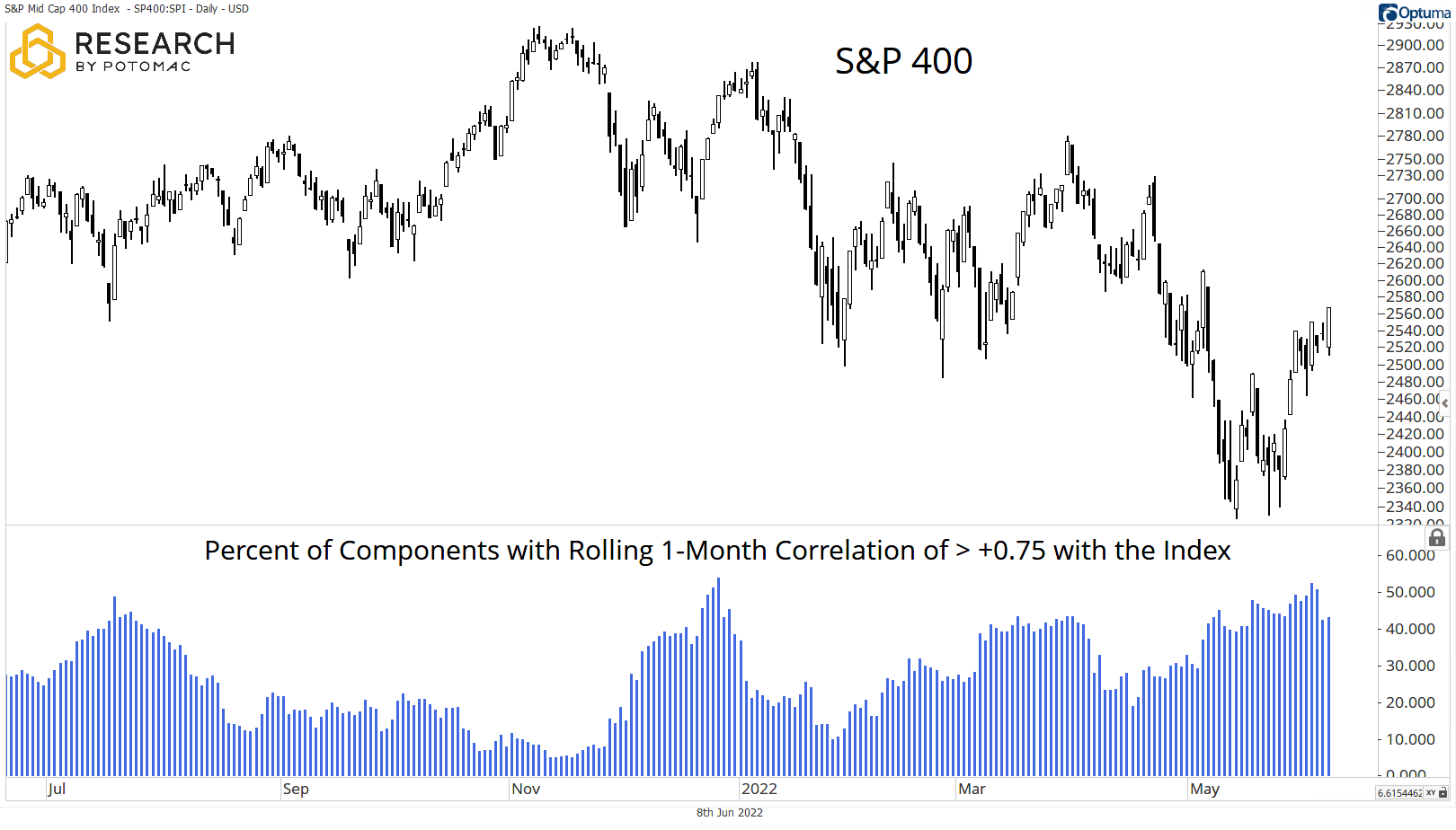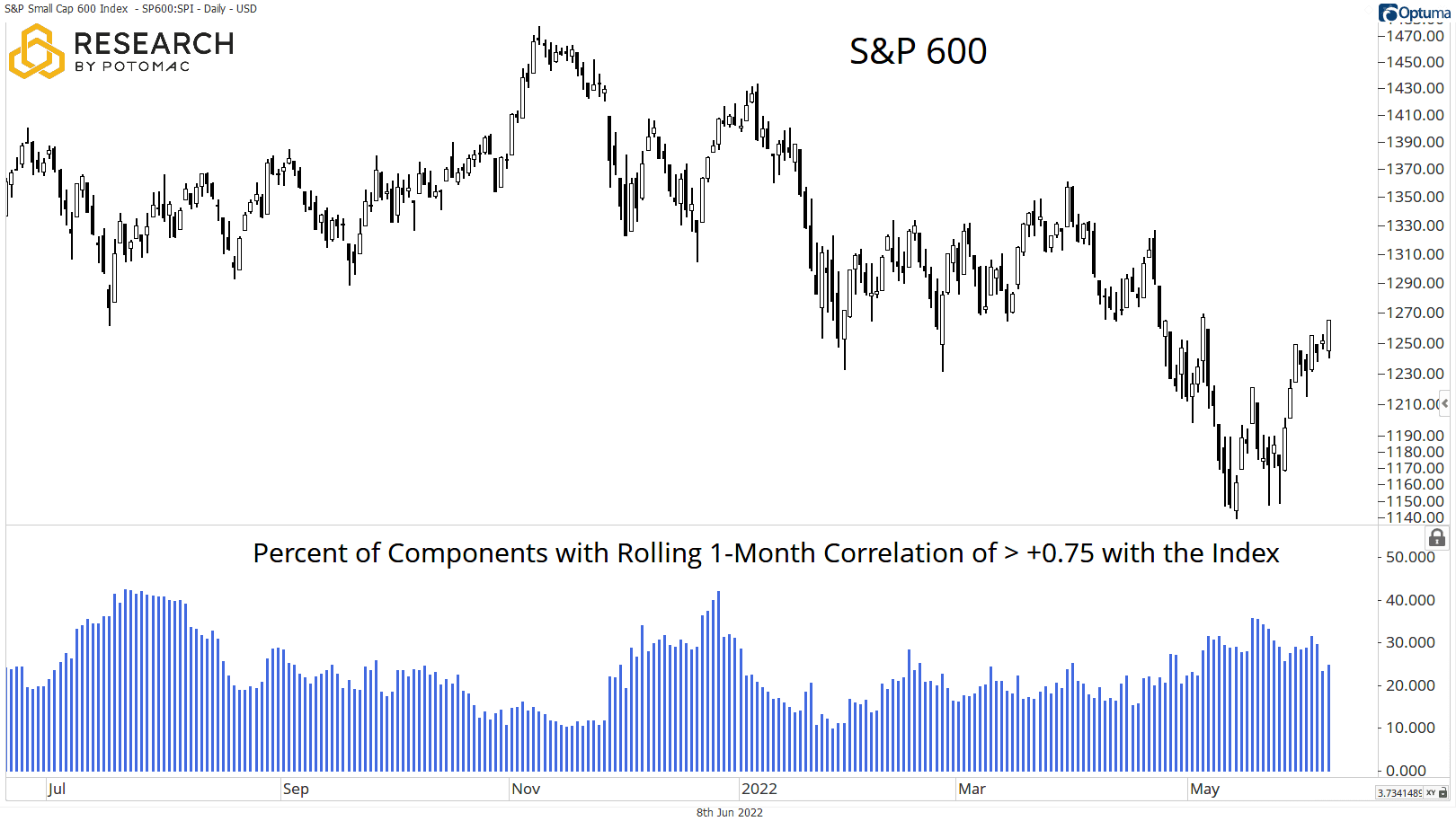
The phrase “stock picker’s market” is often presented as a known fact rather than the platitude that it simply is. Many active managers will frequently cite that the market environment is conducive to picking stocks, without citing much (if any) evidence other than opinion to take such a position. This blog post seeks to define and identify a “stock picker’s market.”.
The first step in this process is outlining relationships or identifying and defining relationships with individual stocks and their associated indexes. “Correlated” is a term that many in the financial industry tend to use loosely to describe a relationship between two or more variables. However, often, this term is presented with little to no context. What does correlation measure, how can it be defined, and how can investors use this tool to help with their decision process?
Merriam-Webster defines correlation as “a relation existing between phenomena or things or between mathematical or statistical variables which tend to vary, be associated, or occur together in a way not expected on the basis of chance alone.” The operative word in this definition is “associated,” and it is key not to confound association with causation.
Said differently, correlation measures the degree of co-movement (or inverse movement) of a set of variables, most often presented with two variables. In this case, we are looking at the strength of the relationship between individual stock returns with index returns. Correlation is a bounded indicator, meaning that it has both a high and a low limit; in this case, correlation ranges from +1 to -1.
A positive correlation coefficient of +1 means that the two variables being measured move perfectly in sync with each other, and a negative correlation coefficient of -1 means that they move in a perfect inverse fashion with one another. As such, these readings are rarely (if ever) reached.
More importantly, the timeframe being defined is key. Correlation coefficients in Technical Analysis are typically measured over rolling timeframes of one, three, and six months but can be any combination of timeframes that closely suits the investors.
Before diving into the indicator, it’s important to call out two common mistakes many make in interpretating the readings from this indicator.
First, a correlation of zero, or “uncorrelated,” is often misinterpreted as a negative relationship. Correlations of zero or close to zero simply indicate that there is no relationship between two variables.
Second, it’s all too easy to assume that just because there is a strong relationship between two variables (positive or inverse), it must mean that it is causal. Quite the contrary, correlation simply points out an association or lack thereof, not causation.
Additionally, students of the capital markets will be quick to note that there are no laws within markets; they are dynamic and often change for any reason under the sun. A previous historical association of two assets or market relationships is by no means a requirement for a said relationship to continue.
When utilizing correlation readings, investors would be prudent to consider these limitations. Nevertheless, these readings can provide a great deal of information for investors willing to approach this indicator within reason.
If a high number of stocks have been trading very different than the price action of their associated index, this should (in theory) be an environment where the dispersion of potential outcomes for individual stocks should be much wider than when they are trading closely in sync with the index. However, both the metrics and the timeframes are rarely, if ever, defined by those who use the phrase. In this post, we attempt to provide some context around both.
While there are many methodologies that can be utilized to define this market environment, an indicator that the research team has been working on is measuring the percentage of index components that are highly correlated with the index.
On a more granular level, we are screening for stocks that have a trailing one-month correlation of greater than +0.75 with the index. It’s worth noting that there’s no official scale in the industry of what is considered a “high” correlation metric, and it’s up to the user to take all variables into consideration during the screening criteria. For these purposes, +0.75 provides a reasonable balance between a high-water mark and the frequency of signals.
Current Standing of Individual Stock Correlations Across Major Markets
For the S&P 1500, the percentage of components highly correlated with the index has backed off the YTD highs to readings in the low 30s. Note that these prints have remained persistently high for the month of May and into June, despite being very cyclical in nature in prior months.

For the S&P 500, the pattern in readings appears much the same as in the S&P 1500, however, note the difference in the scale on the right-hand side in the lower pane. While recent readings are off their YTD highs, note that the S&P 500 had two 50%+ readings; one in late May and one in early June, the first 50%+ readings since the summer of 2020.

For the S&P 400, cyclicality in the readings has been more moderate compared to the S&P 500 but note that a 50%+ print was registered in December of last year. Again, note that while recent readings are just off the highs for the year, they remain elevated.

For the S&P 600, the percentage of components highly correlated with the index has remained low, unlike its larger peers as of late. Not only have readings remained low, but the small rise in May also never hit levels above 40%, indicating a wider dispersion of potential outcomes among index constituents.

Bringing it All Together
Investors can utilize correlation metrics to gauge whether it makes practical sense to position materially different than the market. Thinking back to Portfolio Management 101, investment risk is essentially made up of two different sources: Beta, or market-related risk, and idiosyncratic, or asset-specific risk.
If readings in these indicators are high, that is essentially suggesting that individual stocks are moving very closely with the index, and market-related risk remains high. For active managers, the dispersion of potential outcomes when these readings are elevated becomes compressed, suggesting a decreased likelihood that large bets on individual stocks will ultimately pay off. It may not be a “stock pickers market” when these readings are elevated.
If readings are low, this is suggestive that individual stocks are decoupling from the price action at the index level, and idiosyncratic risk remains high. Likewise, the dispersion of potential outcomes when these readings are low is much wider than when readings are high, suggesting an environment that is more conducive to portfolio positioning that is materially different than the market, although this potentially comes with added risk depending on a variety of factors.
While the term “stock picker’s market” has been thrown around much over the last several decades, little to no context has been presented around this phrase. Investors can utilize correlations with individual stocks, exchange-traded products, and a variety of other publicly traded vehicles with the market to identify environments where it makes practical sense to have a materially different portfolio.
While much of the outcome is up to the skill of the manager and risk management processes, utilizing a variety of correlation indicators can help prudent investors decide when to go with the tide and when to go against it.
Disclosure: This information is prepared for general information only and should not be considered as individual investment advice nor as a solicitation to buy or offer to sell any securities. This material does not constitute any representation as to the suitability or appropriateness of any investment advisory program or security. Please visit our FULL DISCLOSURE page.
